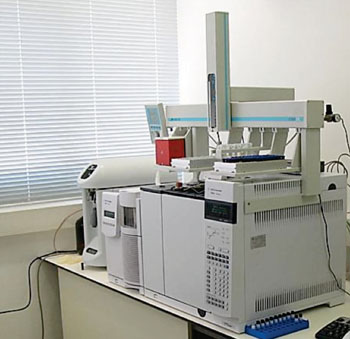Gastric Cancer Detected Through Exhaled Breath
By LabMedica International staff writers
Posted on 28 Apr 2015
A new type of technology that senses minute changes in the levels of particular compounds in exhaled breath accurately identifies high risk changes which herald the development of stomach cancer.Posted on 28 Apr 2015
The technology, known as nanoarray analysis, could be used not only to test for the presence of stomach cancer, but also to monitor those at high risk of subsequently developing the disease as stomach cancer rarely causes symptoms in its early stages, making it hard to detect.

Image: Gas chromatography linked to mass spectrometry apparatus (Photo courtesy of the Hebrew University).
Scientists at the Israel Institute of Technology (Haifa, Israel;) and their colleagues collected 968 breath samples from 484 patients, including 99 with gastric cancer, for two different analyses. The participants had fasted for 12 hours prior to the breath samples being taken and had refrained from smoking for at least three hours beforehand. In addition, subjects were tested for infection with Helicobacter pylori infection, an established risk factor for stomach cancer, and their smoking and drinking habits were analyzed.
The first sample was analyzed by gas chromatography linked to mass spectrometry (GCMS) and the second by cross-reactive nanoarrays combined with pattern recognition. The GCMS analysis that measures the levels of volatile organic compounds (VOCs) identified 130 VOCs in participants' exhaled breath. On comparing the breath samples of participants with stomach cancer with those of participants who had changes in VOC levels considered to be precancerous, the scientists identified eight distinctive "breath-print" compositions.
On applying the nanoarray technique to the breath samples, the team found it was effectively able to distinguish between breath-print compositions in participants with stomach cancer and those at low and high risk of the condition. The method achieved 73% sensitivity, 98% specificity and 92% accuracy, according to the results. While GCMS technology is unable to be used for stomach cancer screening due to its high cost and complexity, the scientists say nanoarray analysis may be a highly accurate and cheaper alternative. The study was published on April 13, 2015, in the journal Gut.
Related Links:
Israel Institute of Technology














